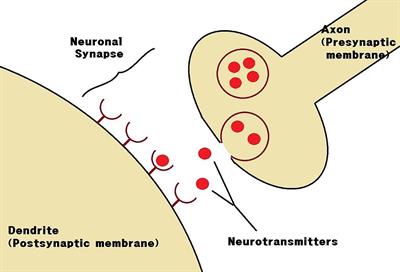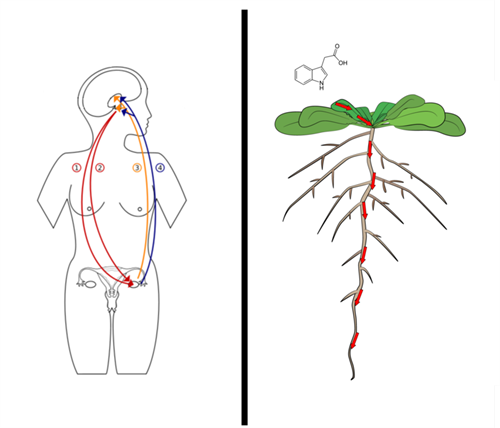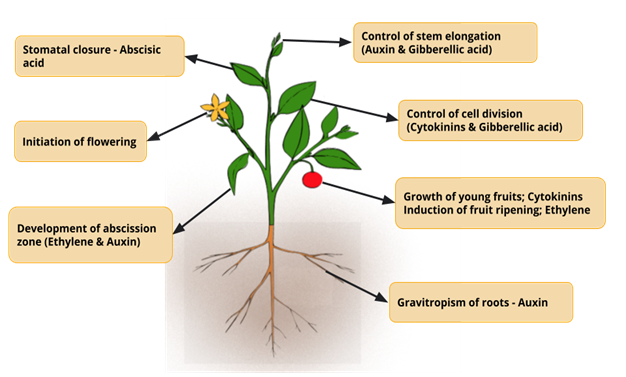
PUMPA - SMART LEARNING
எங்கள் ஆசிரியர்களுடன் 1-ஆன்-1 ஆலோசனை நேரத்தைப் பெறுங்கள். டாப்பர் ஆவதற்கு நாங்கள் பயிற்சி அளிப்போம்
Book Free DemoWe have learnt that the movement in plants is based on the stimulus and is either slow or fast.
Important!
The responses to the stimuli will occur at a faster rate only if the information transfer occurs quickly. For this, it requires a medium of transmission which moves at a faster rate.
What is chemical communication?
The electrical impulses are an excellent mode for faster cell-to-cell communications. Due to some limitations, it will occur only within the neurons. Along with the electrical impulses, the neurons use some chemical messengers for communications, known as chemical communication.

Chemical communication in animal cells
What are hormones?
The electrical followed by chemical communications are not observed in plant cells as they lack nervous tissue. Instead of impulses, the stimulated cells release a chemical compound that diffuses throughout the organism's body. The other cells detect these released chemicals using the special molecules on their surfaces that will be recognized and transmitted. And, these chemicals are known as hormones.
Let us study the various hormones secreted in plants and their importance.
The word hormone is derived from the Greek word "hormone", meaning "to excite", "to stimulate", "impulse".

Transportation of hormones in plants and animals
Plant hormones:
The control and coordination in plants are carried out by these chemical substances in plants known as plant hormones or phytohormones.
These are organic molecules produced in low concentrations in plants, controlling various morphological, physiological, and biochemical responses.
Types of plant hormones:
Plant hormones can be classified as five major classes. They are as follows:
- Auxins
- Cytokinins
- Gibberellins
- Abscisic Acid (ABA)
- Ethylene
In accordance with growth auxins, cytokinins and gibberellins are the plant hormones that promote plant growth; abscisic acid and ethylene inhibit plant growth.

Hormonal interaction in plant growth and development
It stimulates the formation of an abscission zone in leaves, flowers, and fruits, leading to premature shedding.
Reference:
https://en.wikipedia.org/wiki/Hormone#/media/File:Hormone_Transport.png
https://commons.wikimedia.org/wiki/File:Plant_microbiota.png
https://upload.wikimedia.org/wikipedia/commons/thumb/0/08/Neuronal_Synapse.jpg/1024px-Neuronal_Synapse.jpg